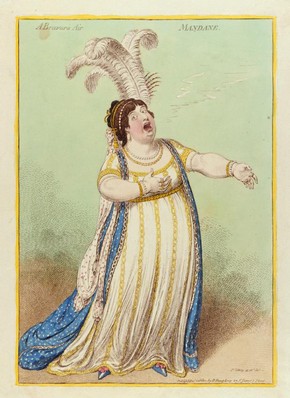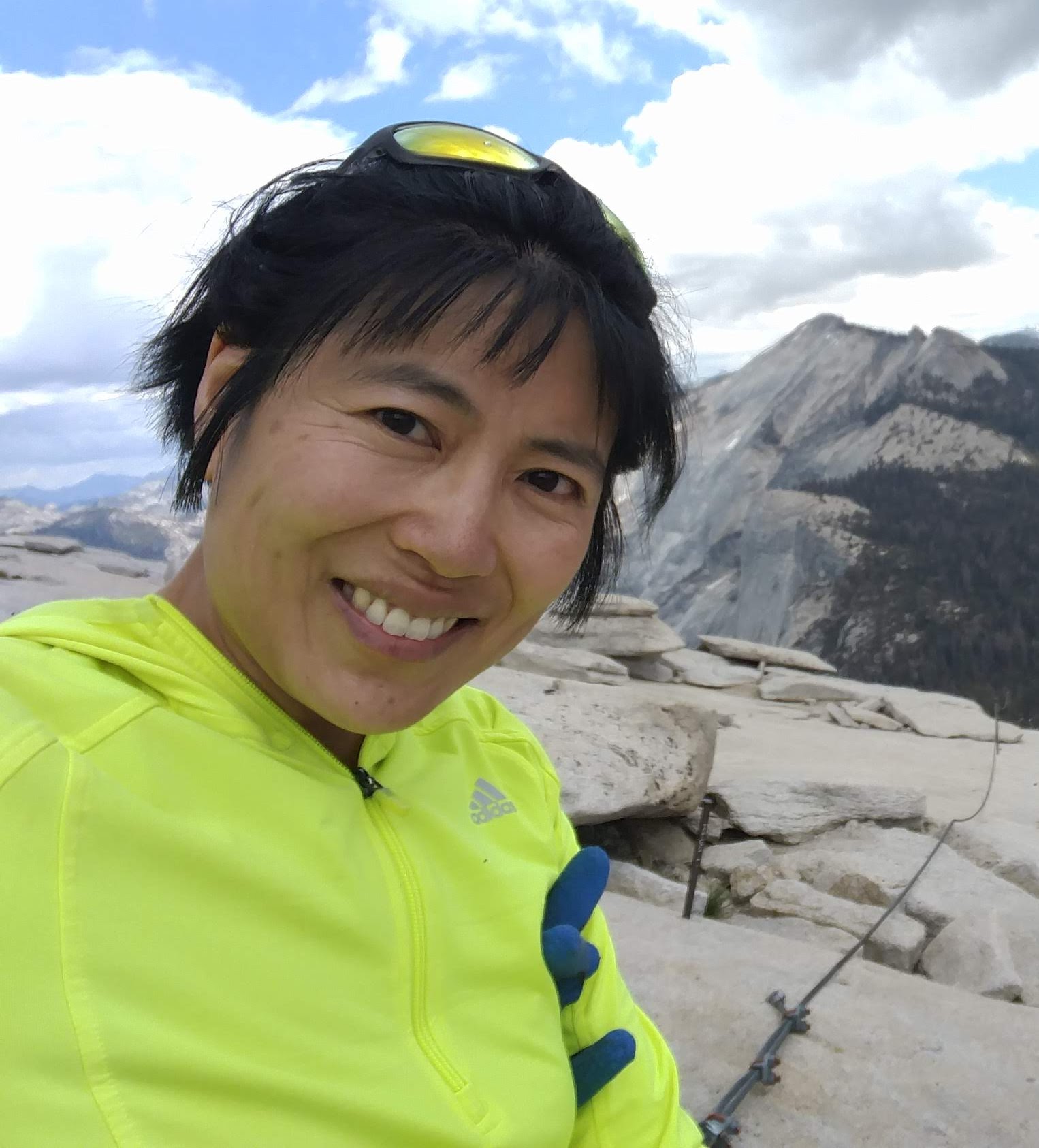
1801 caricature of Elizabeth Billington by James Gillray
But after awhile, I started itching for the next adventure: shifting from straight news to longer, narrative forms of writing. This transition beckoned because longform suits my analytical mind and preference for a less frenetic writing pace. To my relief, there are templates for these magical, more cinematic stories, too. But applying and adapting them has proven tricky.
Now throw in “voice” — that signature mark of every writer which, to me, has always seemed utterly mysterious and undefinable. Plus, voice smells of personality and opinion, which I’ve learned to suppress when writing news and feature stories. (A side note, though perhaps significant: In my experience, many Asians, whether immigrants or American-born like me, seem more comfortable following rules than speaking out and drawing attention to themselves. Which might explain why writing with voice feels, I dunno, self-indulgent and unnatural?)
So when I went to the National Association of Science Writers (NASW) annual meeting in Washington D.C. last month, it felt like a eureka moment to find an entire panel focused on voice. The all-female lineup — chosen for their expertise in deploying voice in their own writing or drawing it out of the writers they edit — spoke to an audience of journalists, press officers, educators and other science communicators. But the conversation had insights and practical takeaways for all writers wanting to learn how to find and hone personal voice and infuse it into stories that face institutional constraints and ingrained writerly habits.
- What voice isn’t
The panelists dispensed with the myth that essays and other voice-y writing need to focus on the writer. “Sometimes I get drafts from beginning essayists who have the misconception that essays are just ‘me’ but with more adjectives,” said Michelle Nijhuis, an environmental and science journalist who edits a series in The Atlantic called “Life Up Close.” Indeed, essays don’t even “have to have the word ‘I’ in them,” said Amanda Mascarelli, managing editor of SAPIENS, an online magazine covering all things anthropology. “We all recognize voice when we read it or hear it. It’s distinct and it’s individual and you feel like you’re being led by an interesting guide.”
As an example, Nijhuis read aloud this passage from an Atlantic piece by J.B. Mackinnon, about welfare for wild animals (“It’s Tough Being a Right Whale These Days”):
I have been holding back, as I said I would, from the darkest reaches of this story. But let me now make at least one case of deepest right-whale suffering unavoidable. The whale in question never received one of the affable names applied to well-known individuals, such as Kleenex, or Churchill, or Porter. Instead, it was only ever known by its number in a long-standing photo-identification catalogue: #2030.
The story “is not about him, but [the writer] is a very compassionate guide,” Nijhuis said. “At several points he says pretty explicitly, ‘Man, not only is it tough being a right whale these days, it’s tough reading about right whales. I’m right here with you and I’m going to pace you through it.’”
- Find your voice
Don’t be preoccupied with trying to make your voice sound a certain way, said Angela Chen, science journalist at The Verge and formerly a reporter at The Wall Street Journal. Rather than asking who you want to sound like, she suggested taking a look at your unpublished writing — emails, letters, Tweets, journal pages. As a young reporter, Chen struggled to decide what she wanted to focus on. “And my friends would say, well, you’re always sending science links, how about that?”
Editors can help, too. In a Facebook thread unrelated to the conference panel, I asked Santa Monica, Calif., freelancer Katharine Gammon at what stage (pitch? first draft? later drafts?) personal voice seeped into her recent Hakai Magazine feature about a sassy sea lion being blamed for decimating local fisheries.
“There was some in the first draft but it didn’t work terribly well,” Gammon wrote back. The magazine’s senior editor, Shanna Baker, “showed me some spots where she thought more voice would help. I always try to talk on the phone about edits, and in this case I just started talking about my passion for this story . . . and Shanna was like, ‘That! Write what you just told me!’”
Award-winning science freelancer Jo Marchant said it can be easier to discover her voice when she allows herself a temporary but purposeful break from convention. Sometimes it’s jotting “random clouds of words . . . not worrying about sentences.” Other times “I’ll lie on the floor to write instead of sitting at my desk,” said Marchant, author of The New York Times bestseller Cure: A Journey into the Science of Mind Over Body.
Sabrina Imbler keeps her inner thoughts close at hand by jotting them on her iPhone’s Notes app while riding the subway in New York. “That’s my journal — very high tech,” said Imbler, a reporter for The New York Times’ review site, Wirecutter. She also writes a monthly column at Catapult, fusing memoir and marine biology. “Sometimes I’ll write about a specific thing that happened to me. Or I’ll just overhear a phrase or word that I really like, and write that down.”
- Take your time
As much as it helps to pay attention to your reactions and emotions, writing with voice still requires solid reporting. “You need to be really comfortable with the material,” said Nijhuis. “That’s what gives you the confidence to come up out of your reporter’s voice and into your personal essayistic voice, which is reacting to this material that you’ve mastered.”
Pam Weintraub, psychology and health editor at Aeon, agreed that a writer’s voice should arise out of expertise. “It’s very difficult to write an Aeon essay without being deeply knowledgeable and immersed in the topic,” she said. “Pitches that are all voice . . . often make us cringe.”
Don’t get carried away telling your story that you forget who you’re talking to, Nijhuis said: “You have to be a little ruthless with yourself and ask, why does this matter?” And remember that your voice is not all of you. It is “a polished slice of yourself that you’re presenting to the public.”
But for some — especially those of us who self-censor and like templates — voice may best emerge when we free ourselves from the compulsion to polish. When I first sat down to write this piece, I entitled the file “DRAFT – Writing with voice.” After several hours fighting the usual slew of things that derail and distract whenever I sit down to write, I opened a new file: “free writing as lead-in to bulleted points.” Thoughts began flowing, and I started having fun.


